Smart gardening with deer: Deer-resistant summer bulbs, rhizomes, tubers and corms
Summer blooming bulbs, rhizomes, tubers and corms that are planted in spring and early summer are avoided by deer.

Whitetail deer are common in most environments where we live. While there are many smart ways to deter deer, two connected ways are to plant a variety of plants that deer avoid and to transition from a simple landscape design with “buffet-style” offerings to a more complicated and large-scale design that “buffers” the damage. Here we focus on one specific group of plants: summer blooming bulbs, rhizomes, tubers and corms that are planted in spring and early summer for summer display. In an upcoming article, we will focus on deer-resistant bulbs to plant in the fall for the following spring.
Bulbs, rhizomes, tubers and corms fall into a biological category called geophytes. Many summer blooming geophytes can be purchased two ways: dormant form (e.g., bulbs in mesh bags) or actively growing plants in pots. In fact, some of us may not even realize we are purchasing a geophyte when we chose one of them as a container plant!
Here are some summer geophytes that deer avoid along with some buffer style design ideas.
Allium
Commonly known as flowering onions, there are hundreds of species of alliums in the world, some of which can be grown as perennials in the Midwest. Alliums bulbs generally need to be planted in the fall, but it is increasingly more common to find some narrow leaved perennial-like species grown in pots. Deer dislike allium because they have a strong pungent scent and taste.
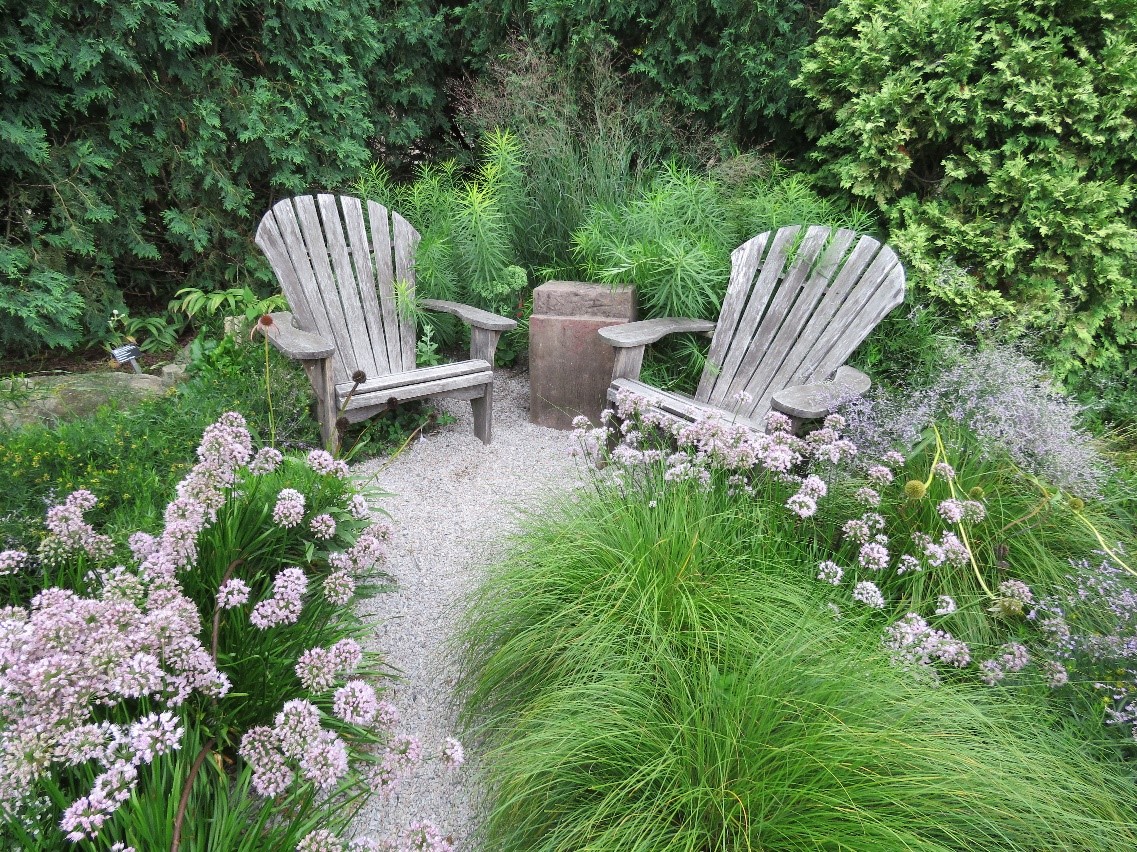
Iris
Deer avoid both the German and Japanese versions of iris because these plants have tough (German) or grass-like (Japanese) leaves, two qualities that deer dislike. German varieties withstand dry sandier soils and Japanese ones favor wetter richer soils; therefore, there is an iris for everyone! Iris look stunning planted en masse with other plants, especially ones that bloom at the same time. Irises are rhizomes and are very easy to grow and reproduce.
Kniphofia
Commonly known as Poker Plants or Desert Candles, these rhizomes produce narrow grass-like foliage much like ornamental grasses. Deer dislike grass-like blades due to their sharp edges. Originally from Africa, Kniphofia grows in mountain ranges in its native habitat and can therefore survive some cooler temperatures here in Michigan (USDA Zones 5 and 6).
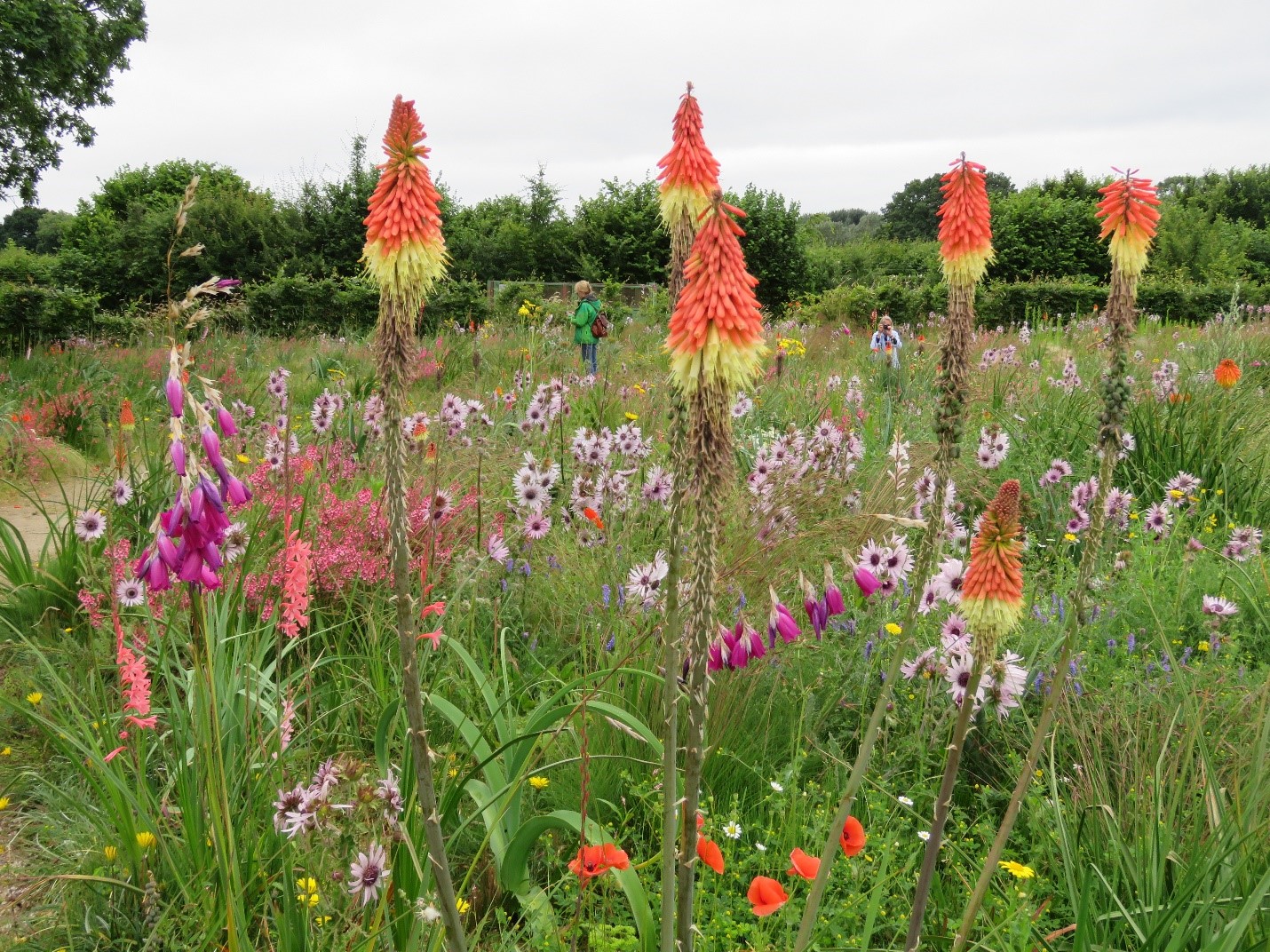
Eremus
Quite tricky to grow for a beginner, eremus (foxtail lilies or Desert Candles) are majestic if you happen to have the perfect soil conditions they need. These plants are not very well-known in the U.S. but enormously popular in England. They are native from Eastern Europe to China and hardy in USDA Zones 5-7. They are generally unreliable in Michigan because they are very susceptible to root rot in the winter from wet soils and need to be planted in very well-drained soil. Their grass-like foliage gives them their deer resistance, but test a small amount out first before investing in a larger planting given their pickiness.
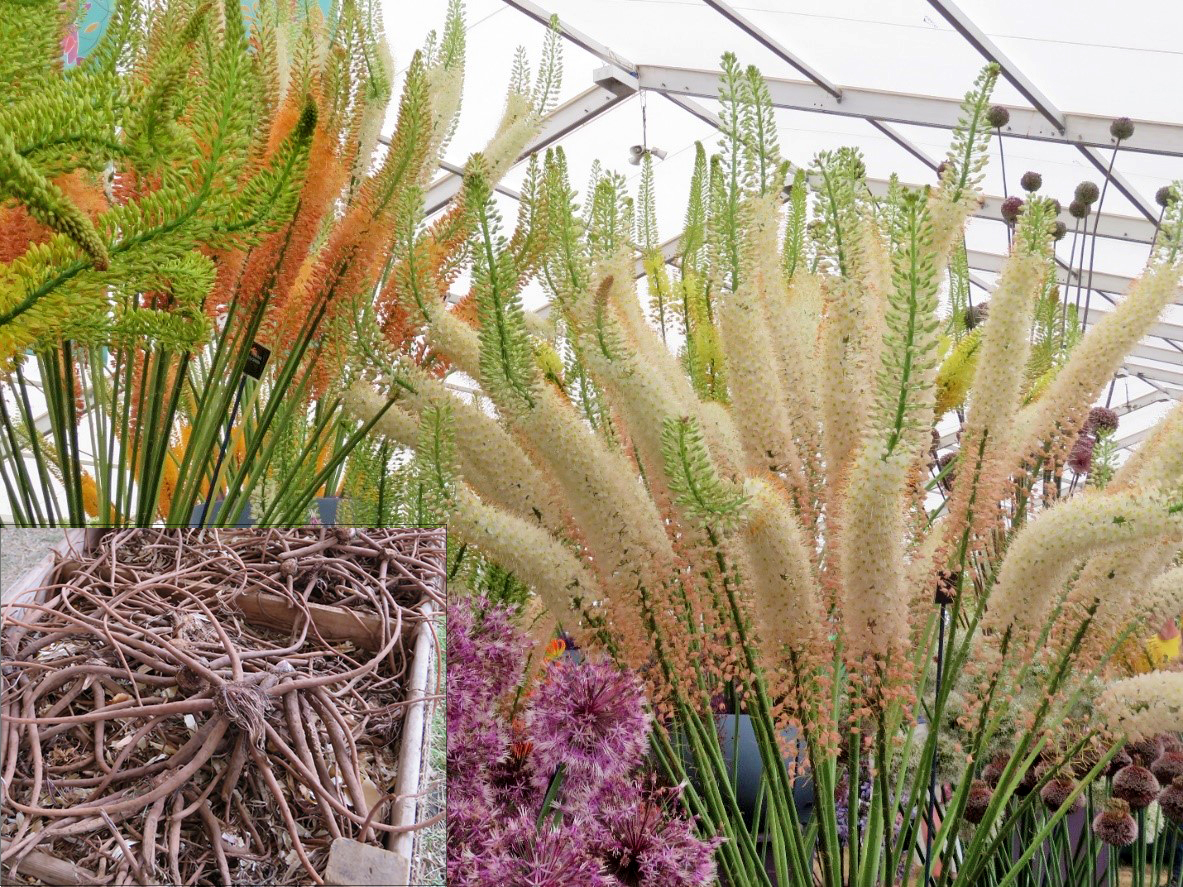
Peony
Peonies are perennials that are sold both as dormant tuberous roots and as potted plants. The leathery leaves of peonies make them deer-resistant, albeit a small risk to the flowers. Nonetheless, it is no surprise they have endured on their own in the middle of yards adjacent to open farmland areas of Michigan where deer and harsh winter winds are common. Many gardeners are also surprised at the variety of cultivars and 33 species of this plant, many of which thrive in cold growing zones (as low as USDA Zone 3). A diverse collection peaks in bloom in June at Matthaei Gardens in Ann Arbor, Michigan.
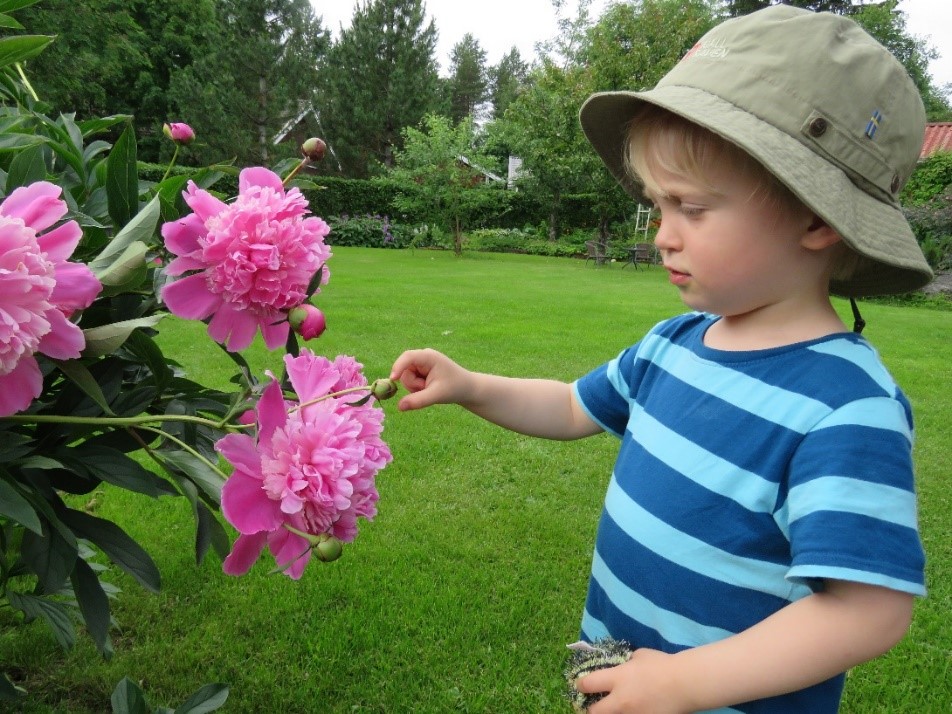
Gladiolus
Similarly to peonies, there is a reason why gladioli historically withstood deer damage in the unfenced gardens of farming communities. Deer do not like their rough, grass-like leaves – in fact, “glads” are sometimes called “sword lilies,” and if there is any fear of the deer picking off the flowers, gardeners typically harvest bloom stalks prior to emergence for longer vase life anyhow. Other less known varieties of gladiolus have looser blooms (e.g. G. callianthus). These looser forms, and even the traditional varieties, can be left to flower in beds with other deer resistant perennials. The 300 species of gladioli originate from warmer climates than the growing zones in Michigan, so their corms need to be lifted and stored for the winter.

Agapanthus
Also called Lily of the Nile, this is a unique bulb to many. Its large blue flowers have a similar look as allium, but it differs from allium because it blooms later in the summer, has smaller species diversity (only six to 10 species, plus some hybrids), and gets its deer resistance from its leathery leaves rather than a strong scent.
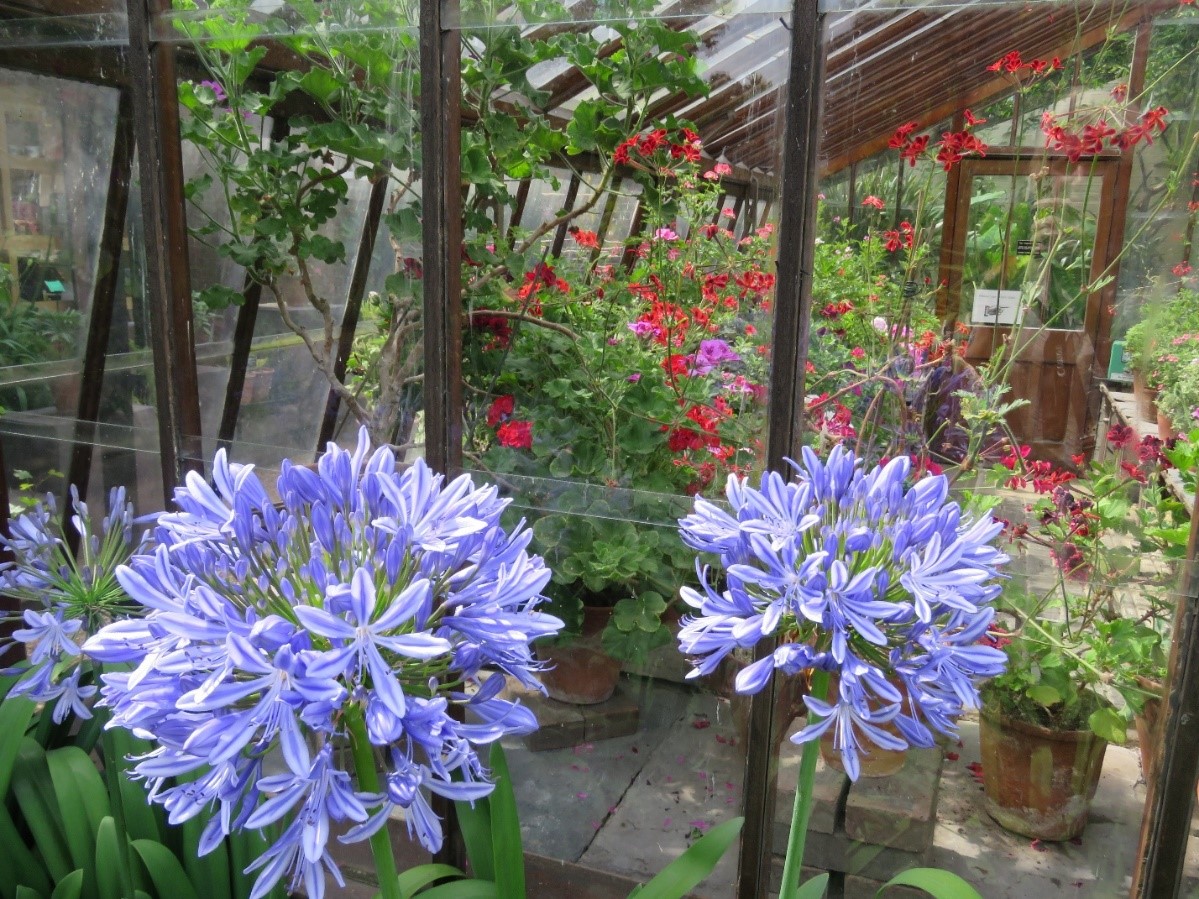
Begonia
Not all begonias are deer-resistant, but those with fuzzy stems/leaves or waxy/leathery leaves tend to be. Begonias have rhizomatous or tuberous stems and tremendous species and cultivar diversity, both in numbers (1,800 species worldwide) and in plant form.
Rex Begonias have rhizomatous stems, fuzzy leaves and stunning foliage. Waxy-leaved begonias (e.g., bedding) have tuberous stems, waxy leaves and are grown more for their flowers than leaves. The large leaf wax begonias (e.g., angel wing begonia) have the most deer resistance because deer can still pluck smaller wax begonias right out of the ground (taste test), even if they do not want to eat them. Except for the hardy begonia, Begonia grandis, which can only be grown in USDA Zone 6 or higher, begonias in Michigan are grown as annuals in summer or overwintered indoors as houseplants.
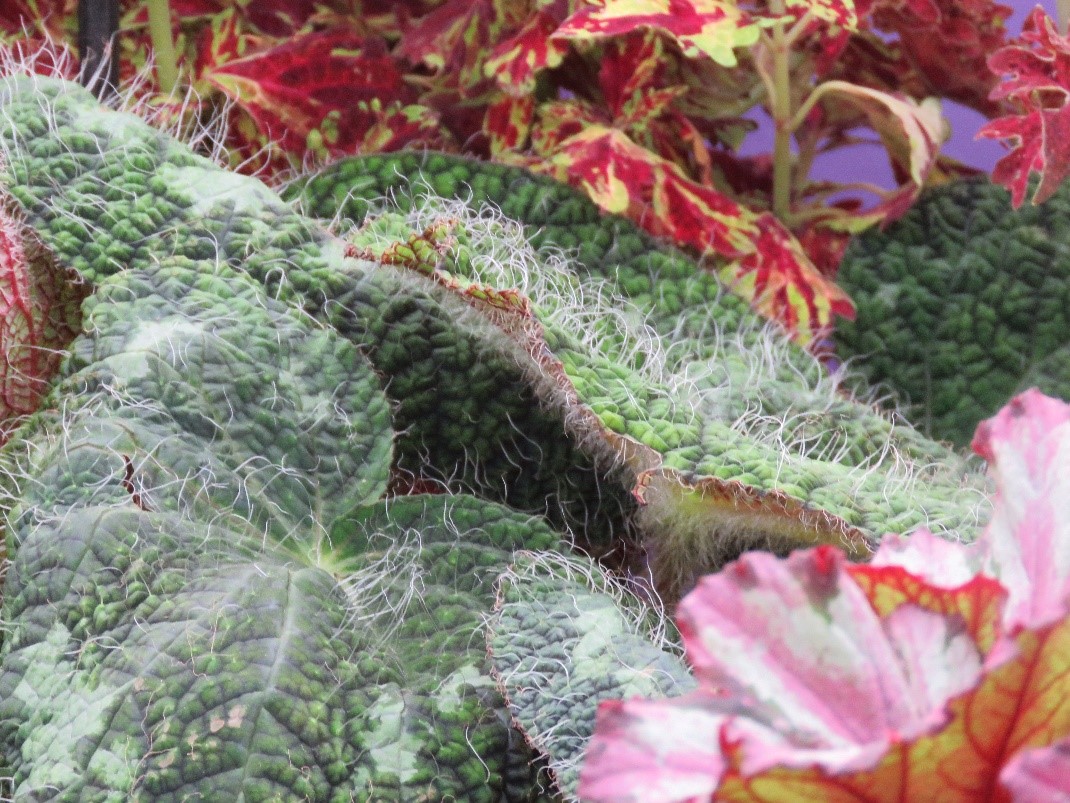

Caladium
Commonly called Elephant Ears, this is a diverse group of tuberous rooted plants from the Araceae plant family with large leaves and often brilliant colors. Elephant ears originate from warm regions and can only be grown as annuals in Michigan. Their deer resistance is likely connected to a toxin they produce called oxalate/oxalic acid. This toxin is also present in other plants of the Araceae family, such as perennial skunk cabbage, and in perennial rhubarb (Rheum sp.), both of which are deer resistant. Imagine a garden full of elephant ears, skunk cabbage and rhubarb—wow!
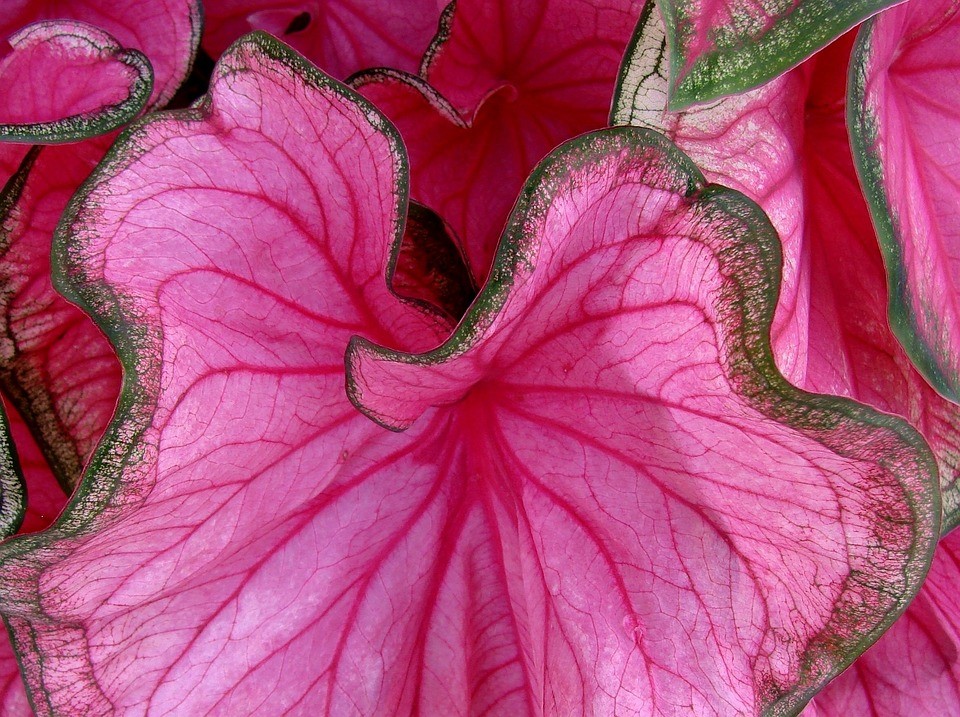
More deer-resistant geophytes:
- Blazing Star (Liatris punctate or the Michigan native Liatris spicata) – Not quite as deer resistant as other bulbs, this corm still has some resistance, especially if interplanted with other deer resistant plants that complement it, like Echinacea.
- Bleeding heart (Dicentra ) – A common perennial that is sold in both dormant form (in bags) and active form (in pots). All species and cultivars of bleeding heart have very high deer resistance.
- Canna lilies (Canna) – Their leathery leaves and often large size make them deer resistant. Their rhizomes need to be lifted in most areas of Michigan in the fall—allow the foliage to die back before cutting the tops off for storage.
- Crocosmia/Montbretia – These corms produce plants with orange/red flowers on tall stems and grass-like foliage; ‘Luicifer’ is hardy to USDA Zone 5, but most of these are only suitable down to Zone 6.
- Cranesbill (Geranium tuberosum) – A tuberous rooted perennial in the geranium family, these wild versions of geraniums are deer resistant due to their fuzzy stems and leaves.
- Fumewort (Corydalis solida) – Often sold in pots in early spring, this is a woodland plant.
- Winter aconite (Eranthis hyemalis) – A less familiar bulb that belongs to a more familiar plant family, the Ranunculaceae (buttercups). It is sometimes sold as a potted plant, producing yellow flowers on a low-growing plant.
- Wood sorrel (Oxalis adenophylla) – Another unfamiliar plant from the more familiar genus Oxalis (shamrocks). It is mostly sold as a plant in containers rather than in its dormant corm form.



 Print
Print Email
Email